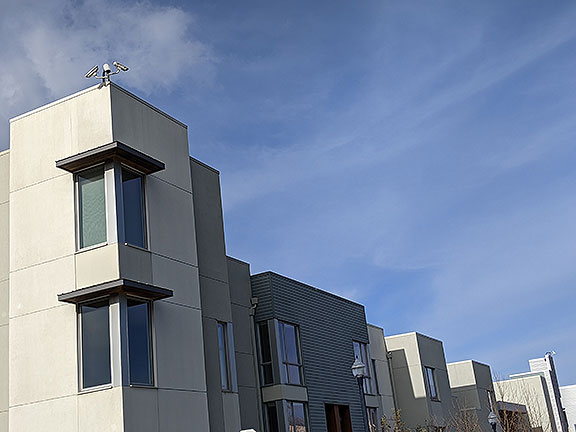In the middle of the economic crisis resulting from the pandemic, the Mayor’s Office of Housing and Community Development (MOHCD) continues to push up rents in the properties that it controls throughout the City. A mid-pandemic announcement from the MOHCD that the annual Area Median Income would be calibrated to rise by 4% for 2020 puts even more pressure on the many properties acquired in the past decade to preserve low-cost housing.
Zillow recently reported that there was a 31% decline in the asking rent for studios in the City over last year. Zumper reported a 20% drop in the past year for 1-bedroom apartments, and a quick perusal shows that there are now dozens of 2-bedroom apartments for rent in San Francisco below $2550/month.
Rather than prioritizing the stabilization of relatively lower rents in Small Sites properties (owned by the San Francisco Community Land Trust (SFCLT), Mission Economic Development Agency (MEDA), and other non-profit housing agencies in the City), MOHCD has provided millions of dollars in acquisition and rehabilitation support in exchange for agreements that exempt tenants of these places from the city’s Rent Stabilization Ordinance (commonly known as rent control). The City agency has imposed agreements on the tenants of these subsidized buildings that rents will go up every year a minimum of 2% and a maximum of 3.5%, and for 2019 and 2020, MOHCD has made it clear that they expect rents to rise the maximum of 3.5%. This is more than double what tenants in privately owned properties are experiencing this year, and many savvy residents are taking advantage of the plunging market to renegotiate their rents downward.

In 2020 the Covid crisis has led many renters to fall behind in monthly payments, and tenants of SFCLT and MEDA are no exception. In one Mission District SFCLT building, where there is already a deficit of $15,000 in unpaid rent from 2020 due to Covid, the City is insisting that rents be raised by a whopping 5% (insisting that last year’s 2% raise “should have been 3.5%” and thus the “missing” 1.5% is being added to this year’s maximum 3.5% to equal 5%). A 3-unit SFCLT building north of the Panhandle is being hit with the maximum 3.5% after struggling to keep the rent paid this year. A 20-unit Tenderloin SFCLT building where more than 50% of the predominantly Latinx tenants have been unable to pay rent due to Covid, many of them already months in arrears, is having the rents raised by 3.5%.
What is the agenda of the Mayor’s Office of Housing?
Isn’t it the goal of MOHCD to help nonprofit housing groups like the SFCLT and MEDA to remove buildings from the predatory private marketplace forever? Why then, would they pursue a policy of relentless rent increases on the very properties that have been successfully removed from the arbitrary and capricious pressure of the speculative market?
Properties acquired with Small Sites Funding from MOHCD should have their rents set by the Rent Stabilization Ordinance, not an automatic annual increase that only contributes to the inexorable inflation of housing costs. Tenants in these buildings should be able to count on their rents not spiraling upwards, since many are pushing the boundaries of reasonable rent burden already, and further increases will only push them into financial hardship.
San Francisco should use the monies from Proposition I to cover the unpaid rents of all the nonprofit housing agencies in town. After multiple housing initiatives have been passed during the last few years, there are millions of dollars available to preserve and expand existing low-cost housing, and the priority should be to halt the annual rise in rents since by all accounts, San Francisco’s housing costs more than any other city in the country.
The Board of Supervisors should legislate new policies that MOHCD, an executive branch agency answerable only to the Mayor, will have to follow, regarding the permanent stabilization of housing costs in the nonprofit sector. Under the current and recent mayors, MOHCD has pursued a neoliberal housing agenda, that gives support for nonprofit housing while imposing rules that ensure that “affordable” is an increasingly meaningless term. Whether new senior housing that few seniors can afford, or the many new affordable apartments that thousands of potential tenants can no longer qualify for because of Covid-related job losses, the Mayor’s Office has an obligation to arrest and reverse the cost of housing.
Stopping the transfer of wealth from poor to rich through the housing market, whether owned by private interests or publicly supported nonprofits, should be the explicit goal of the Mayor’s Office of Housing and Community Development. It currently has other priorities, much more in line with the larger dynamics of the market in which it operates. Tenants who thought they were protected from rent increases and evictions thanks to the Small Sites Program are now urgently counting on political action to change the policies, values, and behavior of the Mayor’s Office of Housing and Community Development, an agency that seems to be more interested in adapting to the dynamics and values of the real estate market than they are in the mission of decommodified housing which should be their primary focus.












Leave a Reply